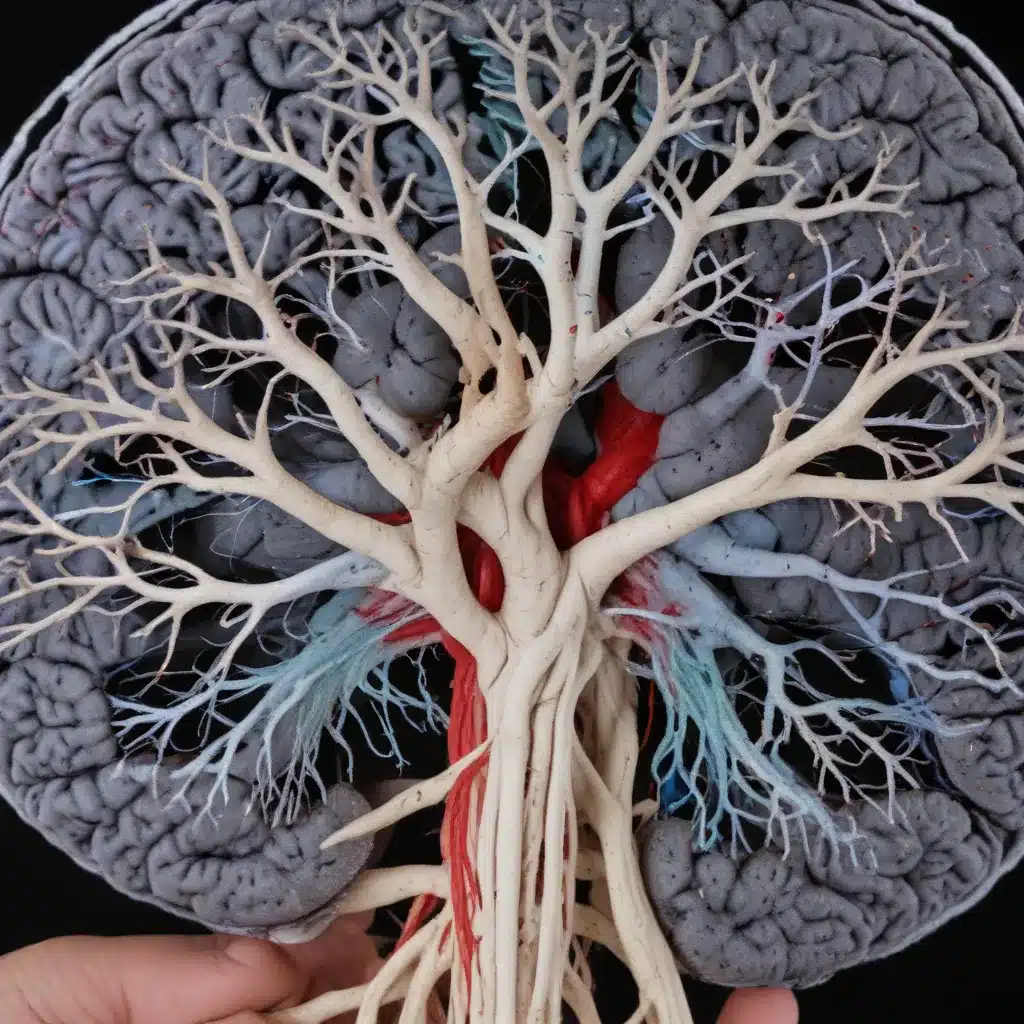
Understanding the Diverse Manifestations of Amyotrophic Lateral Sclerosis
Amyotrophic lateral sclerosis (ALS) is a devastating neurodegenerative disease that presents with a wide range of clinical symptoms and disease trajectories. While the hallmark features of ALS involve the progressive degeneration of both upper and lower motor neurons, leading to muscle weakness and paralysis, the specific manifestations can vary greatly from patient to patient.
This diversity in clinical phenotypes has long puzzled researchers and clinicians, as they strive to unravel the complex underlying mechanisms driving the different disease presentations. One intriguing area of investigation is the role of cortical excitability in shaping the clinical course of ALS. Emerging evidence suggests that alterations in the excitability of the motor cortex may hold the key to understanding the heterogeneity observed in ALS.
Exploring the Relationship between Cortical Inexcitability and ALS Subtypes
A recent landmark study published in the Journal of Neurology, Neurosurgery & Psychiatry has shed valuable light on the relationship between cortical inexcitability and specific ALS clinical phenotypes. The researchers recruited a large cohort of 417 ALS patients and utilized a sophisticated neurophysiological technique called threshold-tracking transcranial magnetic stimulation (TMS) to assess their motor cortical excitability.
Through this analysis, the researchers were able to classify the ALS patients into three distinct groups: those with cortical inexcitability (26.4% of the cohort), those with cortical hyperexcitability (50.3%), and those with normal cortical excitability (23.3%). Interestingly, the researchers found that the ALS patients exhibiting cortical inexcitability displayed a unique clinical profile that set them apart from the other subgroups.
Key Findings: Cortical Inexcitability and the ALS Phenotype
-
Younger Age of Onset: Patients with cortical inexcitability were significantly younger at the time of disease onset, with a mean age of 58.2 years, compared to 62.9 years for the cortical hyperexcitability group and 60.6 years for the normal excitability group.
-
More Advanced Disease Stage: A greater proportion of patients with cortical inexcitability were classified as having Awaji probable or definite ALS (65.7%), indicating a more advanced stage of disease progression, compared to the hyperexcitability (49%) and normal excitability (40.6%) groups.
-
Prominent Upper Motor Neuron Signs: Patients with cortical inexcitability exhibited significantly higher upper motor neuron scores, reflecting a greater degree of upper motor neuron dysfunction and more prominent clinical signs.
-
Increased Upper Limb Weakness: Individuals with cortical inexcitability showed more pronounced upper limb weakness, as evidenced by lower upper limb muscle strength scores, compared to the other groups.
-
Greater Functional Disability: Patients with cortical inexcitability had significantly lower scores on the Revised Amyotrophic Lateral Sclerosis Functional Rating Scale (ALSFRS-R), indicating greater functional impairment.
Interestingly, the researchers found that despite these distinct clinical features, the overall survival rates were comparable across the three ALS subgroups. This suggests that the underlying mechanisms driving the cortical inexcitability phenotype may have a more immediate impact on disease manifestation rather than long-term prognosis.
Implications for Understanding ALS Pathophysiology
The findings from this study highlight the importance of considering cortical excitability profiles when examining the clinical heterogeneity of ALS. The presence of cortical inexcitability appears to be associated with a specific ALS phenotype, characterized by a younger age of onset, more advanced disease stage, prominent upper motor neuron signs, and greater upper limb weakness.
These observations provide valuable insights into the potential mechanisms underlying ALS pathogenesis. The researchers propose that the cortical inexcitability may be indicative of a more severe degeneration or dysfunction of the motor cortex and corticospinal tract, leading to the predominance of upper motor neuron signs and upper limb impairment.
Furthermore, the reduced use of riluzole, a commonly prescribed ALS medication, in the cortical inexcitability group suggests a potential diagnostic delay due to the atypical presentation of these patients. This underscores the importance of incorporating neurophysiological assessments, such as TMS, into the diagnostic process to ensure timely identification and appropriate management of these diverse ALS subtypes.
Implications for Clinical Management and Future Research
The insights gained from this study have important implications for the clinical management of ALS patients. Recognizing the distinct clinical phenotype associated with cortical inexcitability can help healthcare providers tailor their approaches to address the specific functional deficits and needs of these individuals. This may involve more targeted rehabilitation strategies, assistive technologies, and multidisciplinary support to enhance the quality of life for patients with this subtype of ALS.
Furthermore, the identification of cortical excitability profiles as a potential biomarker of ALS heterogeneity holds promise for the development of personalized treatment strategies. As researchers continue to delve into the underlying mechanisms driving the different ALS subtypes, the integration of neurophysiological data, such as TMS findings, into clinical trials and treatment decisions could pave the way for more targeted and effective interventions.
In conclusion, this study’s findings underscore the importance of understanding the diverse manifestations of ALS and the role of cortical excitability in shaping the clinical phenotype. By exploring these complex relationships, researchers and clinicians can gain valuable insights into the pathophysiology of ALS, ultimately leading to improved patient care and the development of more tailored therapeutic approaches for this devastating disease.
Exploring ALS Resources at Stanley Park High School
At Stanley Park High School, we understand the profound impact that neurological conditions like ALS can have on individuals and their families. That’s why we strive to provide our community with access to reliable information, support, and resources to navigate these challenges.
In addition to this article, our school website offers a dedicated section on neurological disorders, including ALS, where you can find educational materials, local support group information, and links to trusted online resources. We encourage you to explore this section and reach out to our school’s health and wellness team if you have any questions or need further assistance.
Remember, staying informed and connected is crucial when navigating the complexities of conditions like ALS. By working together, we can ensure that our students, families, and community members have the knowledge and support they need to thrive.

